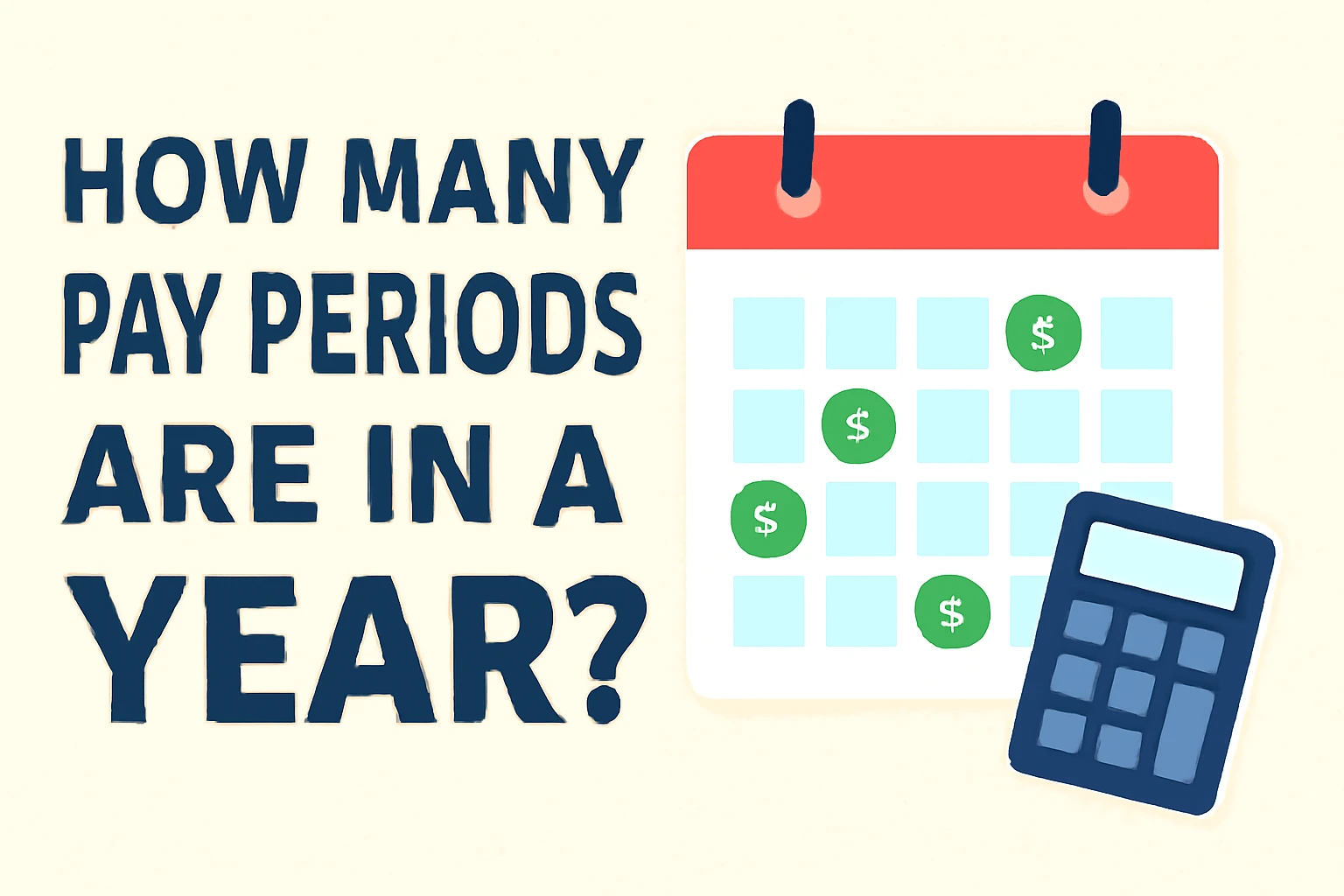Understanding how many pay periods are in a year is essential for both employers and employees. Whether you’re setting up a payroll system or simply trying to get clarity on how frequently employees should be paid, knowing your options can help streamline financial operations and avoid confusion. In this guide, we will break down the various pay schedules, discuss how leap years and calendar quirks affect the number of pay periods, and help you decide on the best payroll schedule for your business.
What Is a Pay Period?
A pay period refers to the length of time between two consecutive paydays, during which an employee’s work hours are tracked and compensated. Pay periods can vary in frequency, and the duration of each period can be weekly, biweekly, semimonthly, or monthly, depending on the payroll schedule chosen by the employer.
Understanding how many pay periods are in a year is important not just for calculating wages but also for tax withholdings, benefit contributions, and overall financial planning. Let’s dive deeper into the most common pay schedules.
Also Read: Cloud Computing for Small Businesses: Unlocking Growth and Efficiency
Common Types of Pay Schedules
There are several payroll schedule types employers can choose from, each with its own set of benefits and drawbacks. The most common pay schedules are:
1. Weekly Pay Schedule
With a weekly pay schedule, employees are paid every week, typically on the same day each week. This results in 52 pay periods in a year.
-
Pros: Provides employees with regular and frequent pay, which can be ideal for those with hourly wages or fluctuating work hours.
-
Cons: It can be more administratively complex and costly for employers, as payroll needs to be processed weekly.
2. Biweekly Pay Schedule
A biweekly pay schedule is one of the most popular payroll options. Employees are paid every two weeks, resulting in 26 pay periods in a year.
-
Pros: More predictable than weekly pay and easier for employers to manage compared to weekly payrolls.
-
Cons: Paychecks may vary slightly in terms of the number of working days (compared to a semimonthly schedule), which could confuse employees in terms of salary calculations.
3. Semimonthly Pay Schedule
With a semimonthly pay schedule, employees are paid twice a month, usually on fixed dates (such as the 15th and the last day of the month), which totals 24 pay periods in a year.
-
Pros: Simplifies payroll processing and is often easier to track for salaried employees.
-
Cons: Employees may not appreciate the uneven pay amount for months with more than 30 days.
Also Read: Resource Augmentation Services by Foreignerds Inc.
4. Monthly Pay Schedule
Employees on a monthly pay schedule are paid once per month, resulting in 12 pay periods in a year.
-
Pros: Payroll is easy to manage, and fewer administrative costs are involved.
-
Cons: Less frequent pay can be a challenge for employees who rely on regular income.
How Leap Years or Calendar Quirks Can Affect Pay Periods
When calculating how many pay periods in a year, it’s important to consider the impact of leap years or other calendar quirks. A leap year, which occurs once every four years, adds an extra day to the calendar—February 29th.
In biweekly pay periods, this additional day may result in 27 pay periods instead of the usual 26. This adjustment can slightly affect payroll processing, particularly for employers and employees who expect a fixed number of pay periods each year.
In most cases, payroll administrators will choose to adjust the payroll schedule for the leap year, ensuring that employees are paid the same amount they would be in a regular year, but this may require minor recalculations.
Biweekly vs Semimonthly: What’s the Difference?
Both biweekly and semimonthly pay schedules are common options, but there are distinct differences between the two.
Biweekly Pay
-
Frequency: Paid every two weeks, resulting in 26 pay periods in a year.
-
Amount: If an employee is salaried, the pay amount may fluctuate slightly from one paycheck to the next due to the varying number of working days in each period.
-
Consistency: Paydays fall on the same day of the week (for example, every second Friday).
Semimonthly Pay
-
Frequency: Paid twice a month, generally on the 15th and the last day of each month, resulting in 24 pay periods in a year.
-
Amount: The pay amount remains consistent, as employees receive the same amount per paycheck regardless of the number of working days.
-
Consistency: Paydays occur on the same dates each month (15th and last day).
Which One is Right for Your Business?
Employers may choose biweekly vs semimonthly pay based on their operational needs, cash flow, and employee preferences. A biweekly schedule is ideal for employees working hourly or those requiring more frequent pay, while semimonthly pay suits salaried employees or those whose hours don’t vary much.
How to Choose the Right Pay Schedule for Your Business
Choosing the right payroll schedule types involves considering several factors, such as:
-
Employee Preferences: If employees prefer frequent paychecks, a biweekly or weekly pay period may be the best choice.
-
Administrative Ease: A semimonthly or monthly pay schedule may reduce the administrative burden for employers, especially for salaried employees.
-
Industry Norms: Depending on your industry, certain pay schedules may be more common. For example, many retail or hospitality workers are paid biweekly, while tech or corporate employees may be paid semimonthly.
-
Financial Considerations: Some businesses prefer to save on payroll processing costs by choosing a monthly or semimonthly schedule, as it results in fewer processing times per year.
Understanding how many pay periods in a year are feasible with each schedule will help you select the most effective option for both your business and your employees.
Final Thoughts – Make Pay Periods Work for Your Business
Ultimately, the number of pay periods in a year can vary depending on your payroll schedule choice. Whether you opt for biweekly vs semimonthly pay, or even another arrangement, it’s essential to select a plan that aligns with both your financial goals and employee satisfaction.
By understanding the different payroll calendar options, including how calendar quirks like leap years may affect pay periods, you’ll be better equipped to streamline your payroll and maintain a happy, financially secure workforce.
FAQs About Pay Periods
1. What is the difference between biweekly and semimonthly pay?
Biweekly pay occurs every two weeks, resulting in 26 pay periods annually, while semimonthly pay happens twice a month, typically leading to 24 pay periods annually.
2. How many pay periods are in a year for biweekly?
For a biweekly pay schedule, there are 26 pay periods in a standard year.
3. How many pay periods are in a year for semimonthly?
For a semimonthly schedule, employees are paid twice a month, totaling 24 pay periods per year.
4. Can there be 27 pay periods in a year?
Yes, in a leap year, employees on a biweekly pay schedule may experience 27 pay periods in a year due to the extra day.
5. What’s the best pay schedule for salaried employees?
A semimonthly schedule is typically best for salaried employees, as it offers consistent pay amounts on fixed dates each month.



